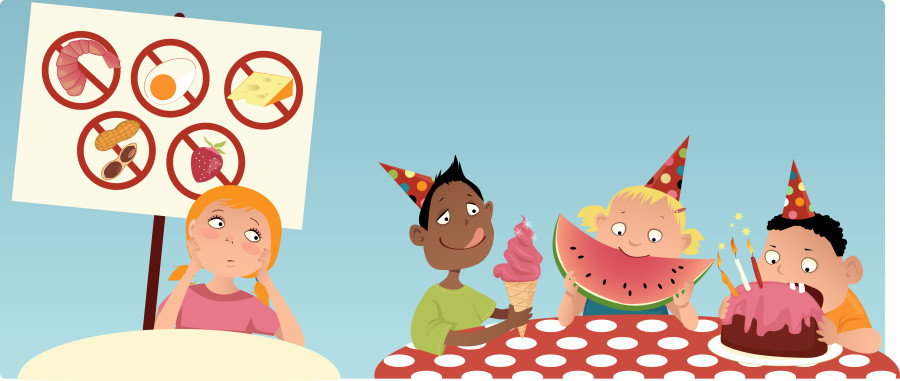My young daughter Grace was born with multiple food allergies: cow’s milk, eggs, and peanuts. As an infant she also had a severe case of infant eczema, which did not resolve with standard treatments. However, after her diet was adjusted based on her newly diagnosed food allergies, her eczema gradually improved. As a U.S. citizen living in Spain, I decided to try oral immunotherapy (OIT) when she was a 4-year old to treat her cow’s milk allergy – her least allergic food item based on tests. Initially, I hesitated over OIT as a treatment option because I knew that she might outgrow some of her food allergies over time. However, her allergy levels could also increase, as is the case for some children.
Benefits and Risks
In the United States, oral immunotherapy is still under investigation to treat childhood food allergies and has been delayed because of treatment risks. In England, a recent peanut OIT trial showed that 84% to 91% of 99 peanut-allergic children in two study groups were able to tolerate 800 mg of peanut daily by the end of the study. The study reported that, “even partial desensitization – the ability to eat a small food serving of an allergic food as opposed to an entire portion – from OIT dramatically reduces the risk of severe reactions after unintentional ingestion.” However, adverse effects from OIT have caused 10% to 38% of subjects to drop out of clinical trials, mostly due to severe stomach pain and diarrhea. The American College of Allergy, Asthma, and Immunology states that, “OIT shows promise in treating food allergy, but it is not ready for clinical practice at the present time because of inadequate evidence for therapeutic benefit over risks of therapy.”
Allergic Reactions
During the treatment process, Grace had to take a gradually increasing dose of cow’s milk every day along with several protocol-related allergy medications. Of note, when she reached the 7 mL cow’s milk dose, she broke out with severe redness, hives, and itching. The allergy clinic has a 24/7 clinician on-hand for emergency situations and I was told to give her an antihistamine and an oral corticosteroid. Minutes after receiving the medications, the hives disappeared and her cow’s milk dose for the next day was consequently lowered.
“Stay Still!”
OIT requires some discipline on the part of the parent and child. For example, the doctor insists that Grace remain calm — no running around — for up to 2 hours after her milk dose, which is a challenge for an active child. Studies report that an anaphylactic reaction can be triggered during food allergy immunotherapy by certain co-factors including heavy exercise, infection, alcohol intake, and non-steroidal anti-inflammatory drugs such as ibuprofen and aspirin. If Grace were to develop a reaction, I would have to halt her cow’s milk doses and restart her treatment based on her allergy doctor’s advice.
Strawberry Ice Cream
Thus far, I am thrilled that Grace has access to oral immunotherapy and I wish this option had been available to me as a child. After three months of treatment, she finally reached the 200 mL cow’s milk mark and devoured her dream treat – a bowl of strawberry ice cream. Over time, she may be able to eat more than 200 mL of cow’s milk in a day, but the critical part is to continue the maintenance dose to “re-train” her immune system to accept the allergen.
Summary
Immunotherapy is a new area of research that provides a therapeutic option for children with persistent food allergies. Even though food allergy immunotherapy may cause adverse reactions and requires taking the food on a regular basis for years to life, it also may give hope to the millions of U.S. children with food allergies. Twenty-first century immunotherapy research may help an increasing number of children change major allergic reactions into minor ones — or possibly into no reaction at all.

